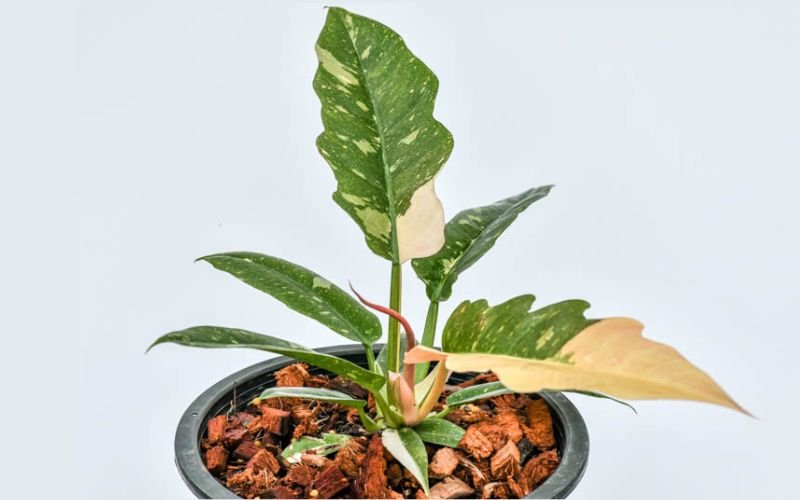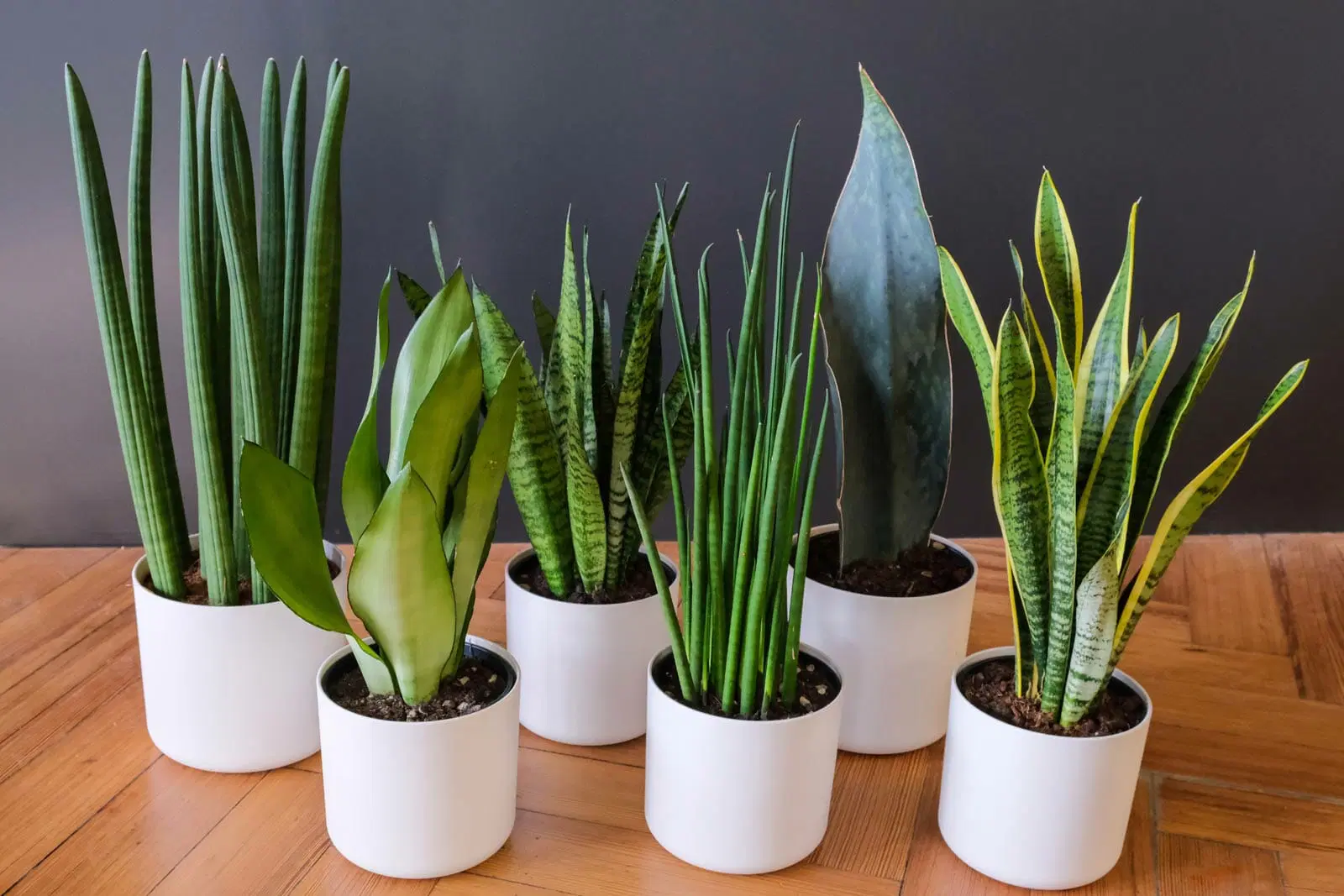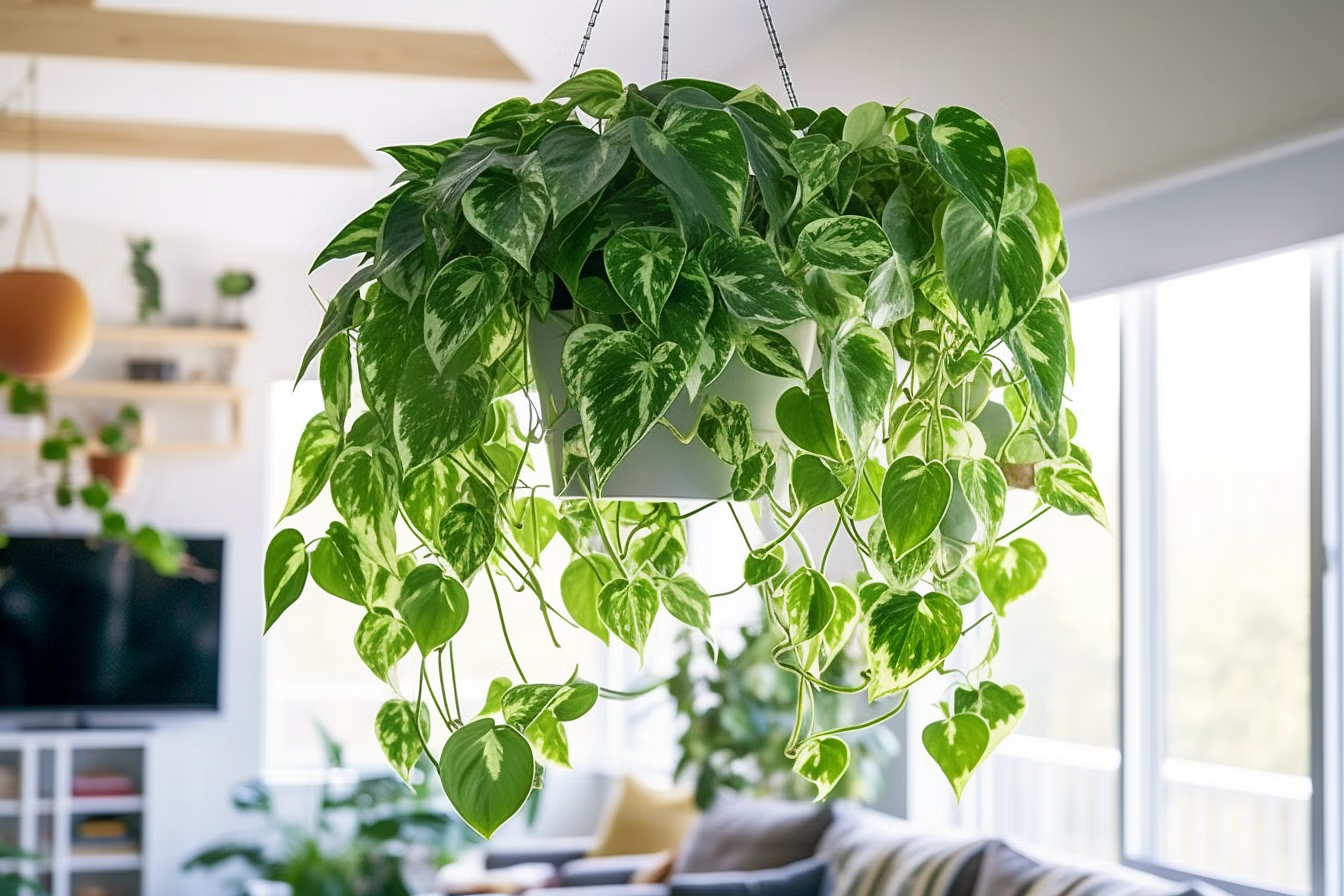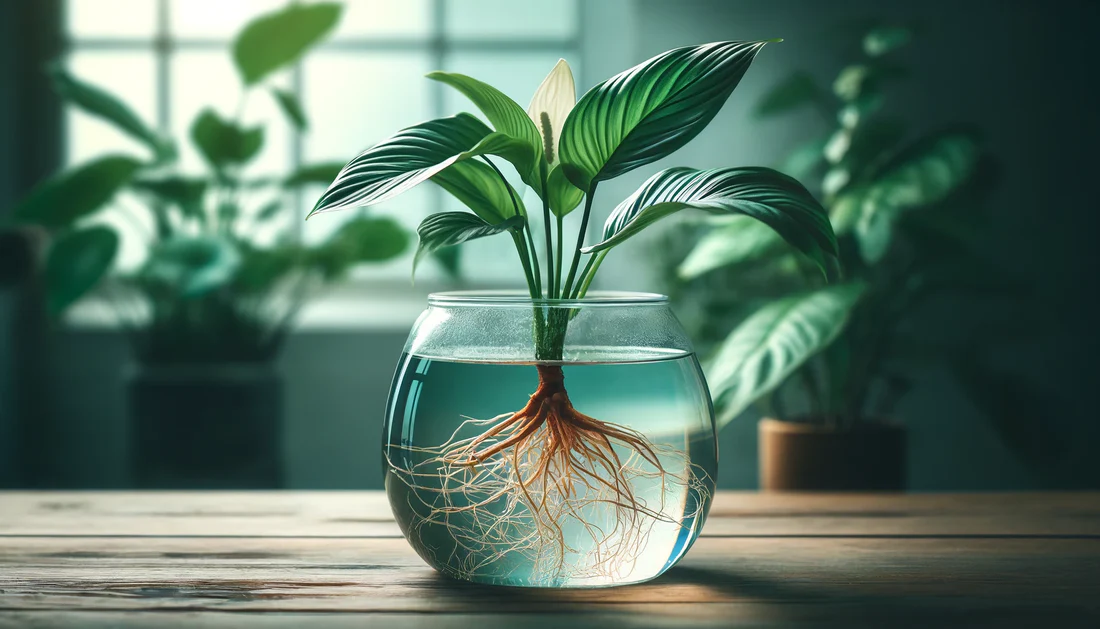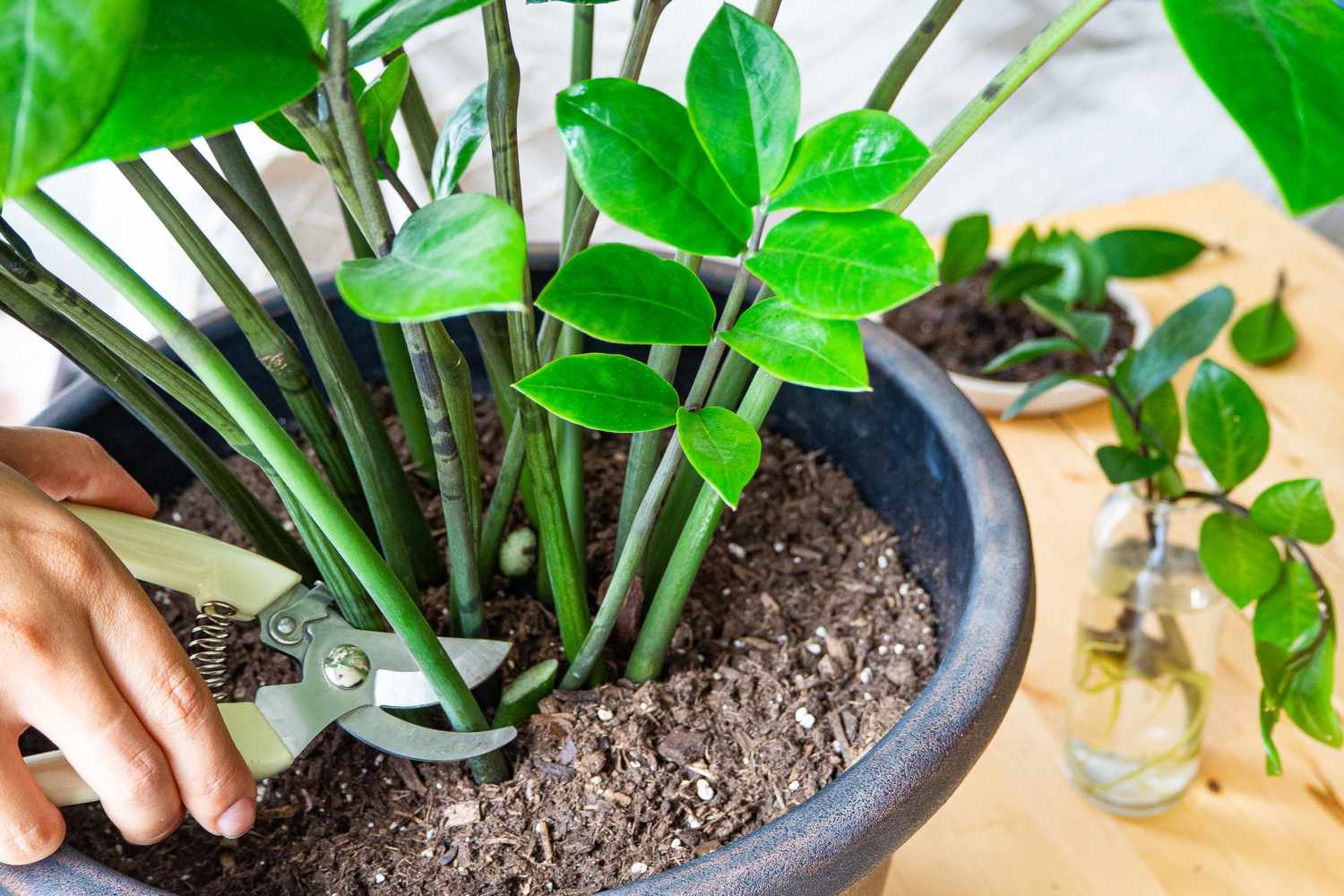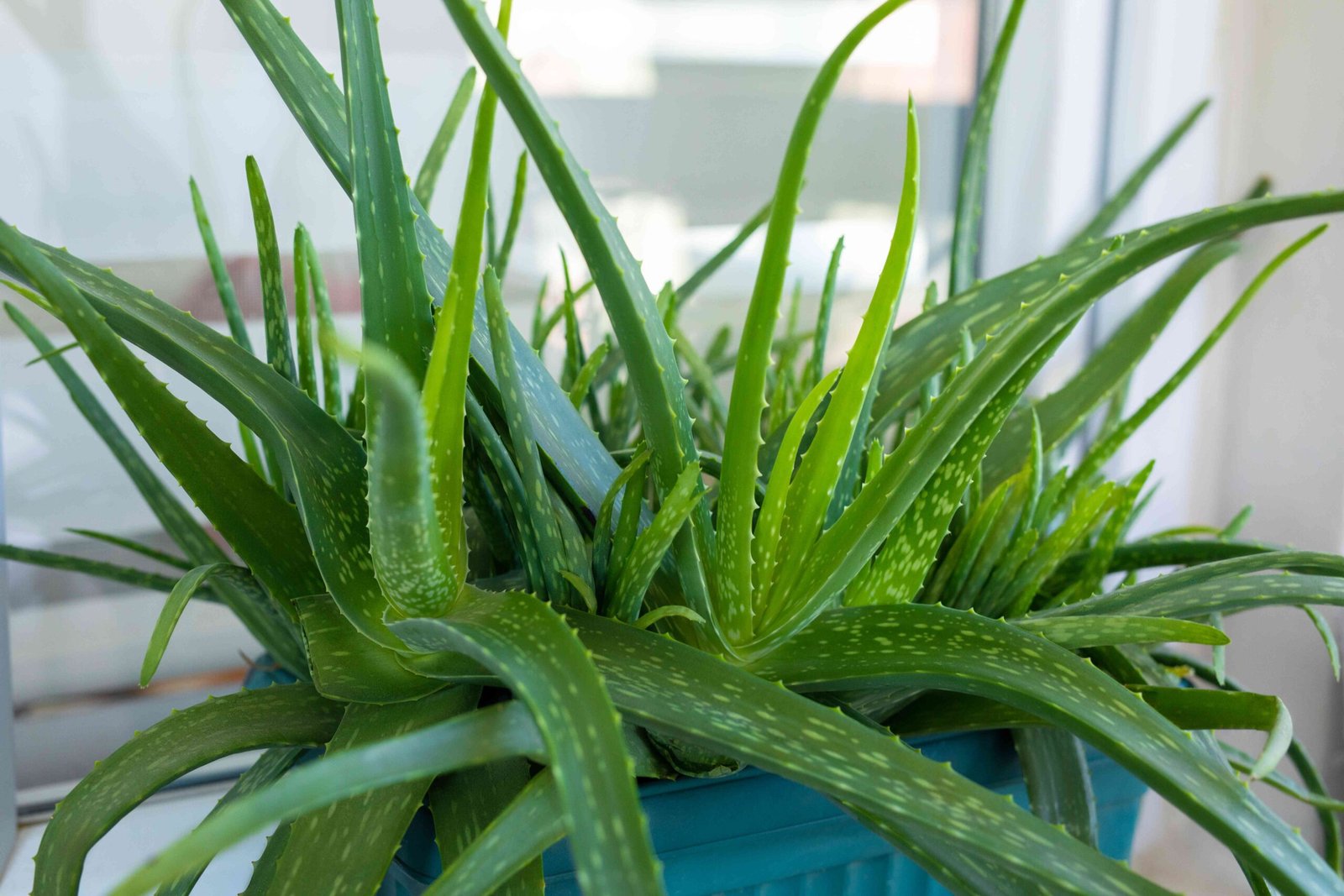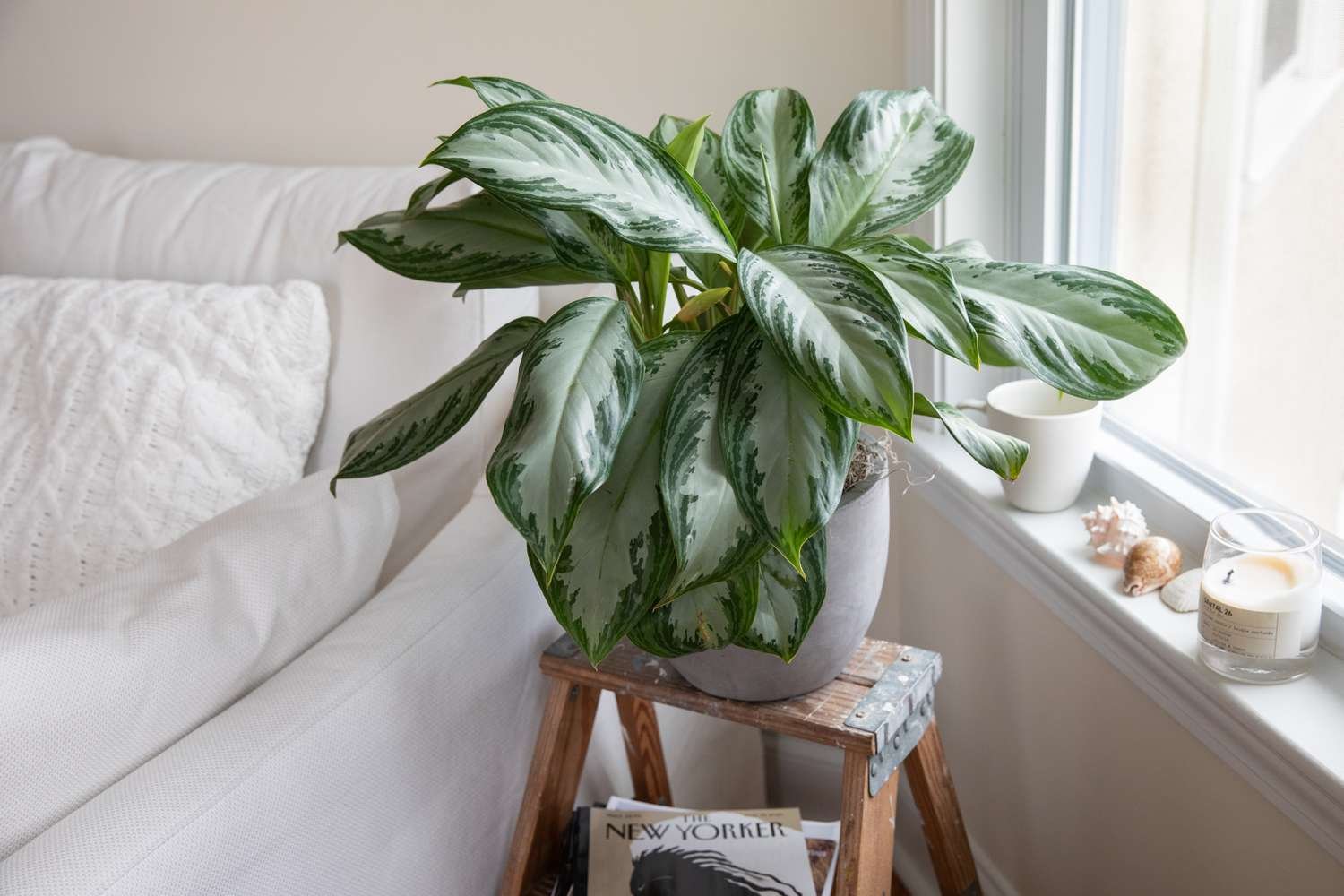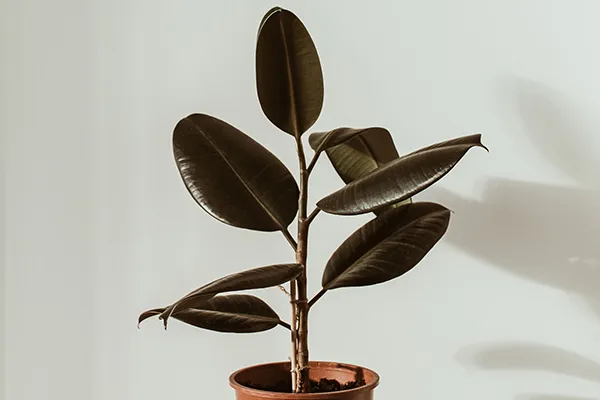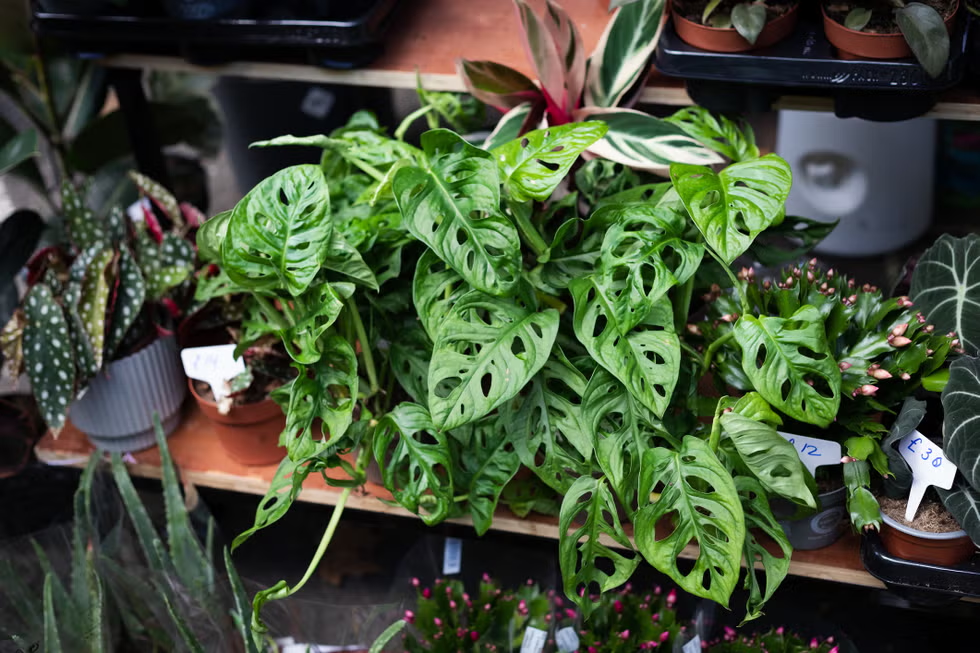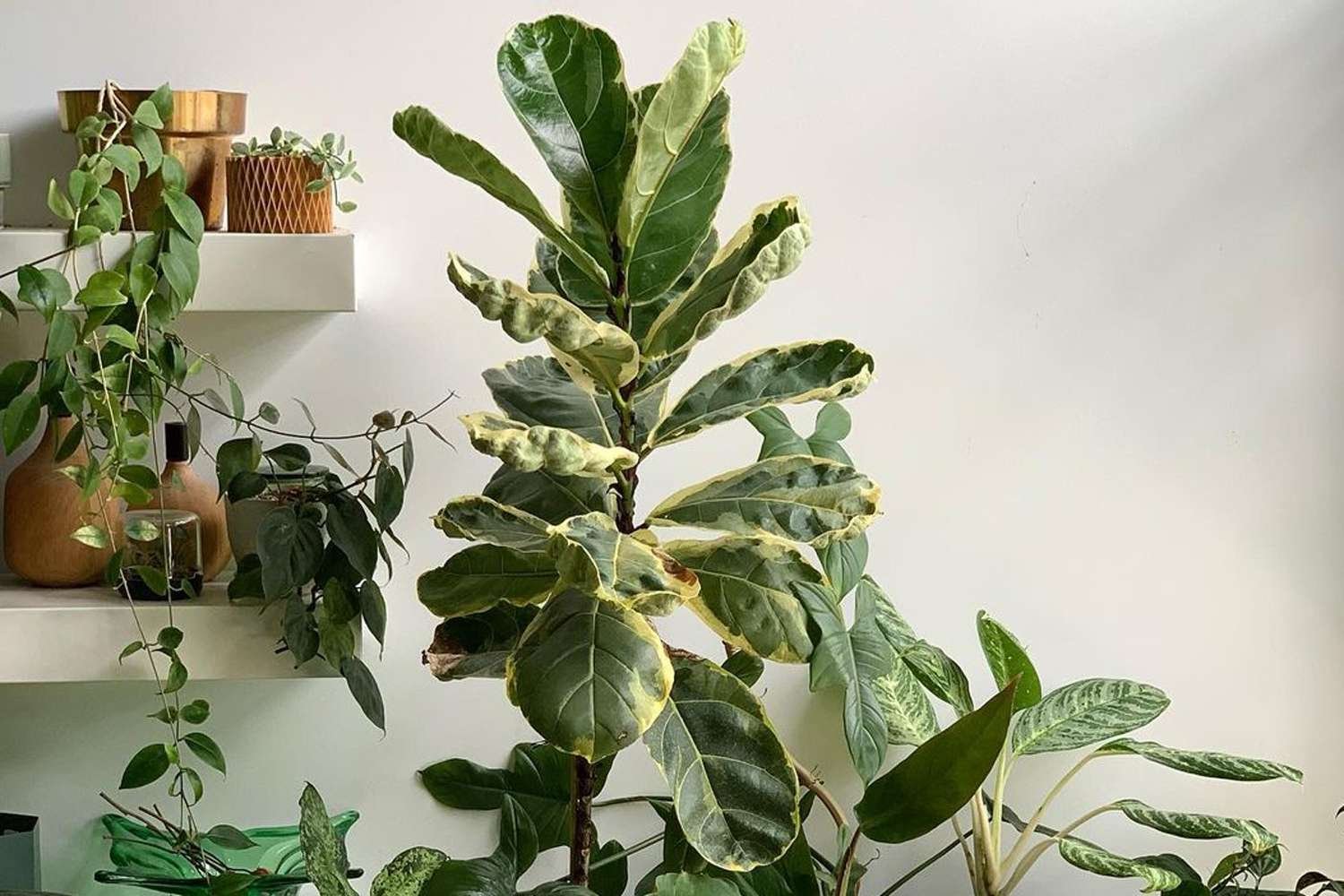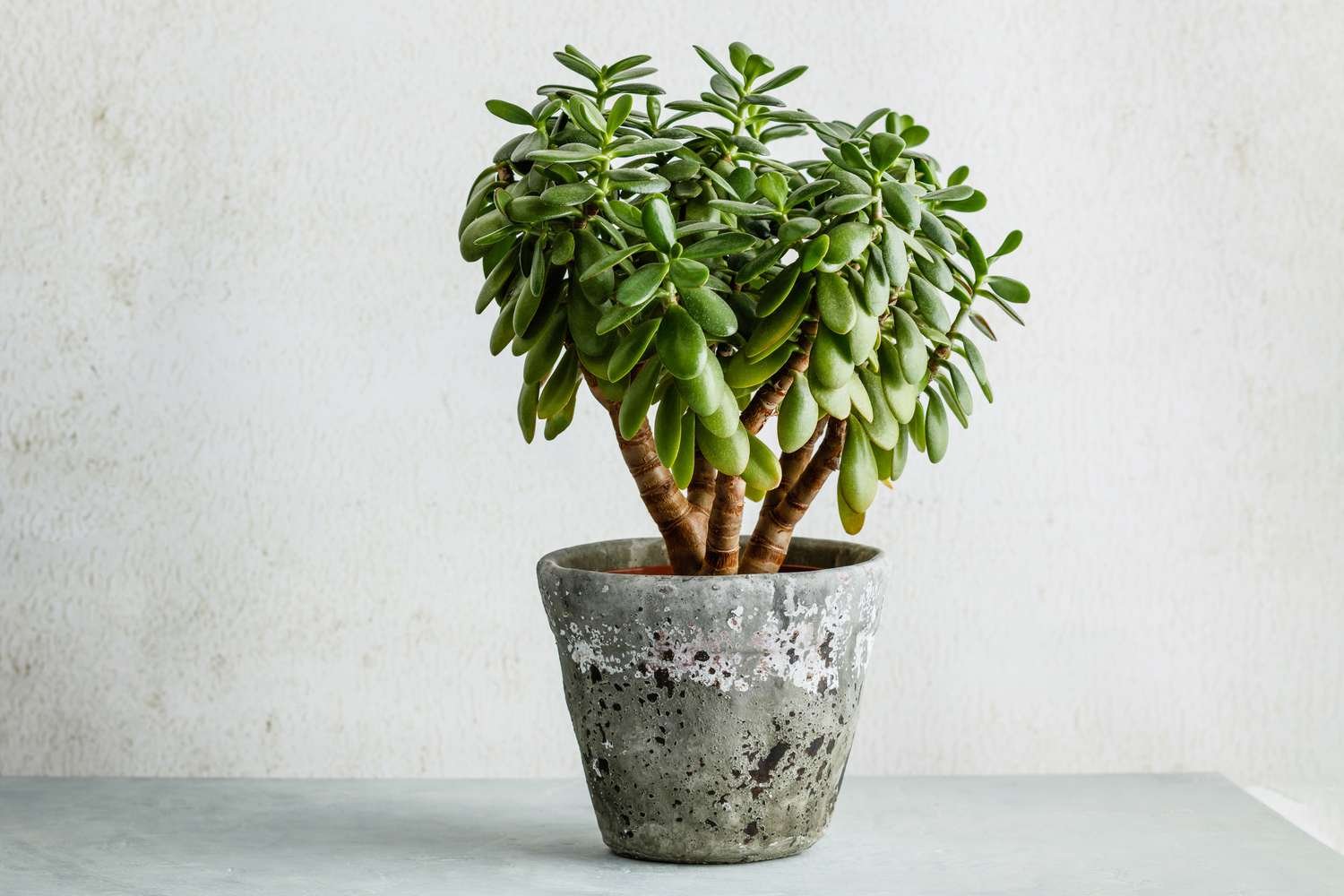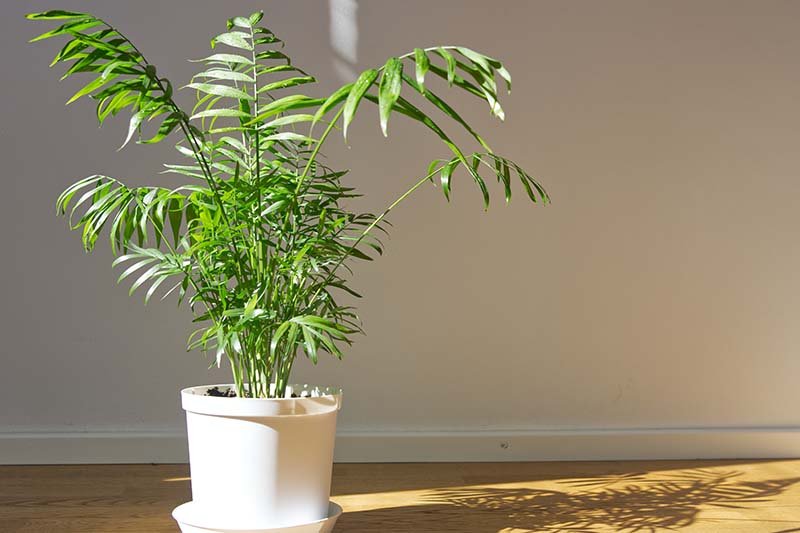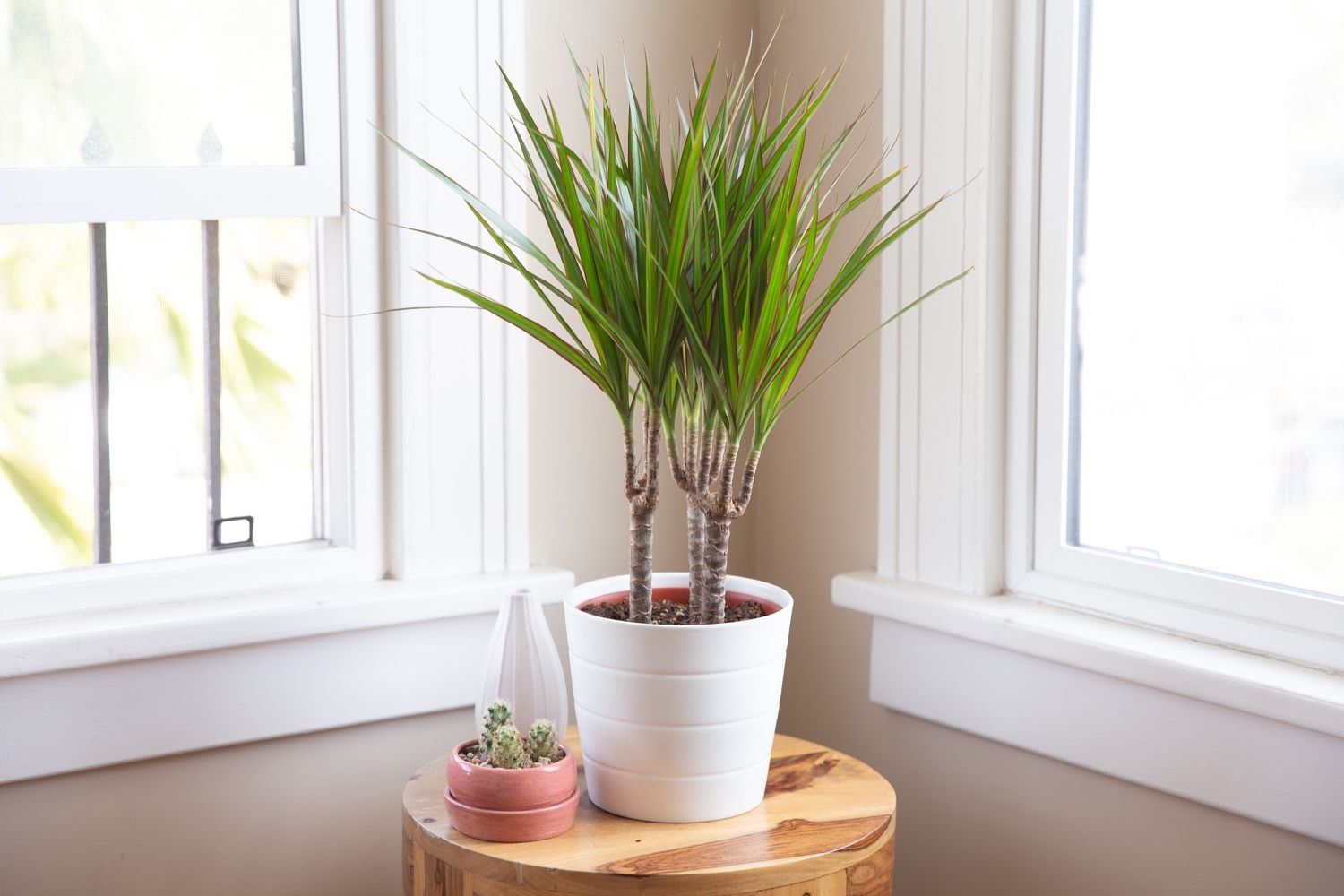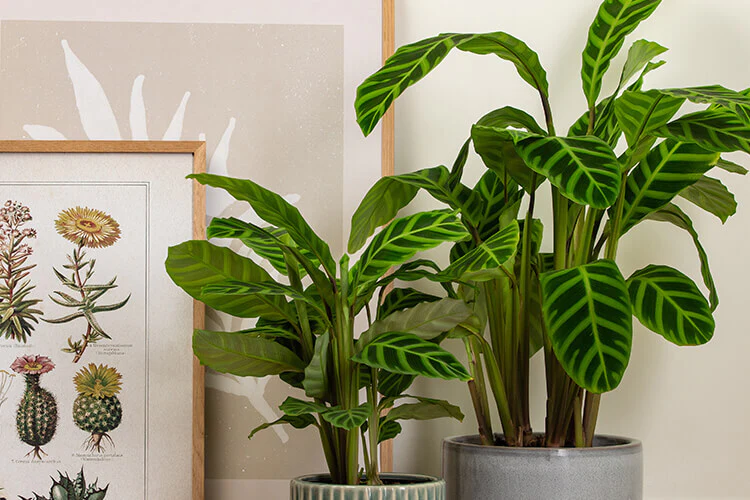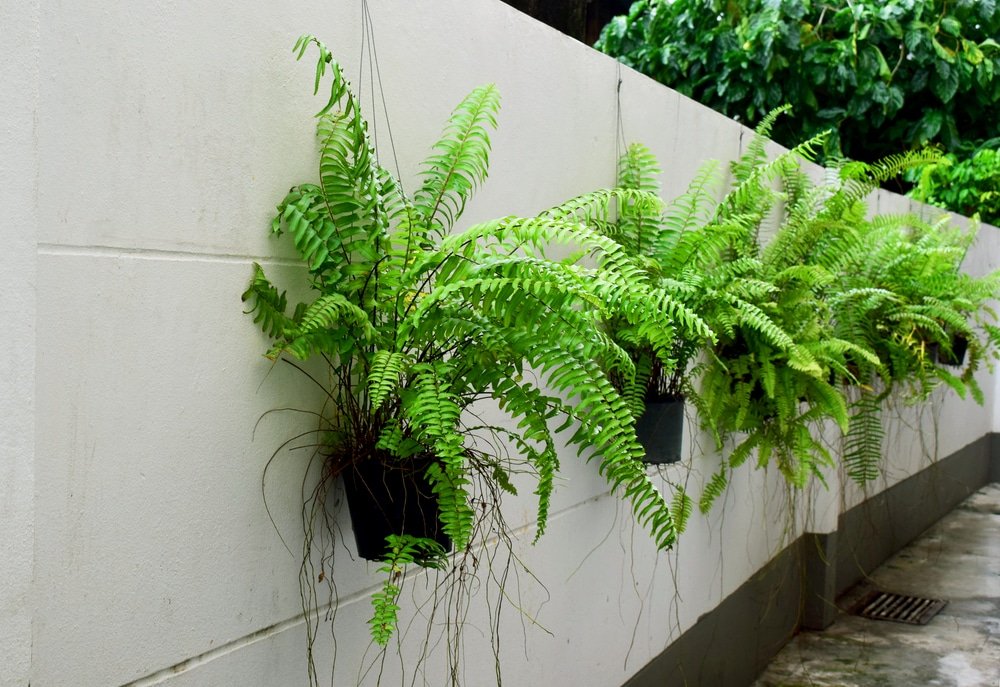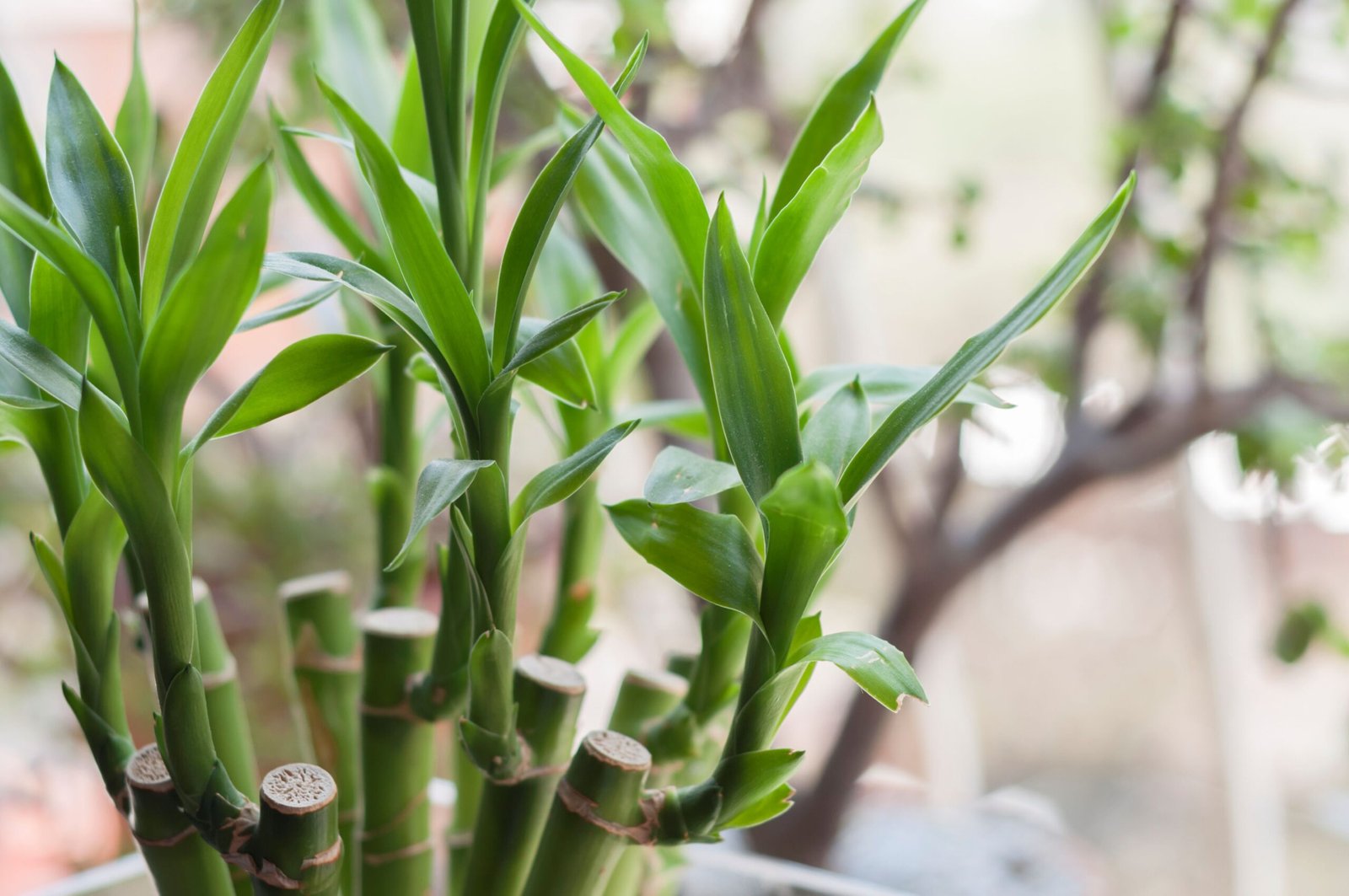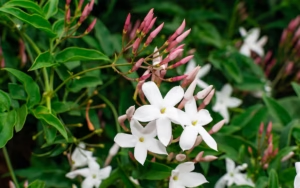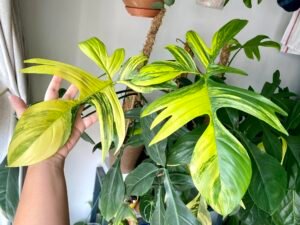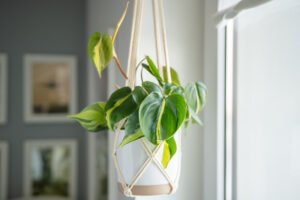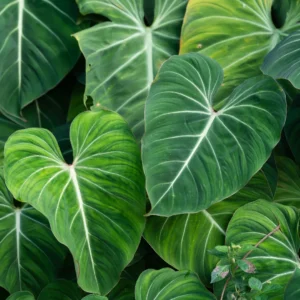Table of Contents
Toggle1. Snake Plant (Sansevieria trifasciata)
The snake plant, also known as mother-in-law’s tongue, is a hardy favorite among beginners. Its striking, upright leaves with green and yellow patterns give a modern touch to any room. This plant is not picky and can survive with little attention.
Snake plants are also air-purifying champs, making them great for bedrooms or offices. They are drought-tolerant and resistant to pests, so you don’t need a green thumb to keep them thriving.
- Name: Snake Plant
- Light: Adaptable to low, medium, or bright indirect light
- Water Needs: Water every 2-3 weeks; let the soil dry completely between watering
- Size: Can grow between 1 to 4 feet tall
- Toxic: Yes, to pets (can cause nausea if ingested)
2. Pothos (Epipremnum aureum)
Pothos is a vine with heart-shaped leaves that come in various shades of green, often streaked with white or yellow. It’s a popular choice for beginners because of its forgiving nature. It thrives even in dim light and tolerates inconsistent watering.
Pothos vines are perfect for trailing from shelves, hanging baskets, or cascading down a plant stand. They’re also excellent air purifiers, making them a practical and decorative addition.
- Name: Pothos
- Light: Thrives in low to medium indirect light, but can handle brighter spots
- Water Needs: Water when the top inch of soil is dry
- Size: Vines can grow up to 10 feet indoors
- Toxic: Yes, to pets (can cause mouth irritation if ingested)
3. Spider Plant (Chlorophytum comosum)
Spider plants are iconic for their arching green-and-white striped leaves and spider-like offshoots. They’re resilient, fast-growing, and excellent at filtering indoor air.
This plant is ideal for busy households because it’s tolerant of missed waterings and varying light conditions. Spider plants are also non-toxic, making them a family-friendly option.
- Name: Spider Plant
- Light: Bright, indirect light (but tolerates lower light)
- Water Needs: Water when the soil is dry; avoid overwatering
- Size: Up to 12 inches tall and 24 inches wide
- Toxic: No
4. Peace Lily (Spathiphyllum)
Peace lilies are beloved for their glossy green leaves and elegant white blooms. They add a sophisticated touch to any room and are surprisingly low-maintenance for their beauty.
Peace lilies are known for their air-purifying abilities. While they tolerate low light, they bloom best in brighter conditions. Just keep them out of reach of pets, as they can be toxic.
- Name: Peace Lily
- Light: Low to bright indirect light
- Water Needs: Keep soil consistently moist; water when the top inch is dry
- Size: 1 to 4 feet tall
- Toxic: Yes, to pets (can cause mouth irritation and vomiting)
5. ZZ Plant (Zamioculcas zamiifolia)
If you tend to forget about your plants, the ZZ plant is your new best friend. Its thick, glossy leaves store water, so it thrives even with infrequent care.
The ZZ plant adds a touch of green elegance to any corner and is almost impossible to kill. It’s perfect for offices, dorms, or any low-light area.
- Name: ZZ Plant
- Light: Tolerates low to bright indirect light
- Water Needs: Water every 2-3 weeks; allow soil to dry out completely
- Size: 2 to 3 feet tall
- Toxic: Yes, to pets (can cause stomach upset if ingested)
6. Philodendron
Philodendrons are adaptable, easy-going, and come in various shapes and sizes. Their lush, tropical leaves can fill a room with vibrancy and warmth.
These plants are forgiving, making them perfect for beginners. They love to climb or trail, so give them a support pole or let them spill over a shelf.
- Name: Philodendron
- Light: Bright, indirect light; tolerates low light
- Water Needs: Water when the top 2 inches of soil are dry
- Size: Varies; trailing vines can reach up to 8 feet
- Toxic: Yes, to pets
7. Aloe Vera
Aloe vera is a multifunctional plant with spiky, fleshy leaves. Not only is it attractive, but its gel is also known for soothing skin burns and irritations.
Aloe prefers sunny spots but can adapt to moderate light. It’s drought-tolerant and easy to propagate, making it a favorite for first-time plant parents.
- Name: Aloe Vera
- Light: Bright, indirect to direct sunlight
- Water Needs: Water sparingly; let soil dry out completely
- Size: 12 to 24 inches tall
- Toxic: Yes, to pets
8. Cast Iron Plant (Aspidistra elatior)
True to its name, the cast iron plant is as tough as it gets. It thrives on neglect and can survive in almost any indoor condition.
This plant has broad, dark green leaves that add a touch of lushness to any low-light space. Its resilience makes it a popular choice for beginners.
- Name: Cast Iron Plant
- Light: Low to medium indirect light
- Water Needs: Water when the top inch of soil is dry
- Size: Up to 2 feet tall
- Toxic: No
9. Chinese Evergreen (Aglaonema)
Chinese evergreens are prized for their patterned leaves, which come in shades of green, silver, and even red. They’re extremely forgiving and adapt to various conditions.
These plants thrive in low light and require minimal effort to maintain, making them perfect for beginners who want a splash of color.
- Name: Chinese Evergreen
- Light: Low to medium indirect light
- Water Needs: Water when soil feels dry
- Size: 1 to 3 feet tall
- Toxic: Yes, to pets
10. Rubber Plant (Ficus elastica)
Rubber plants have glossy, deep green leaves that can make a bold statement in your home. They’re relatively easy to care for and can grow into small indoor trees.
These plants love a bit of light but can adjust to lower conditions, and they prefer a steady watering schedule.
- Name: Rubber Plant
- Light: Bright, indirect light
- Water Needs: Water when soil is dry; avoid overwatering
- Size: 2 to 6 feet tall
- Toxic: Yes, to pets
11. Monstera Deliciosa (Swiss Cheese Plant)
The Monstera deliciosa, with its large, dramatic, and uniquely perforated leaves, is a showstopper. This plant thrives in tropical conditions but is remarkably easy to care for in homes. Its fast growth and striking appearance make it a favorite for those looking to make a bold greenery statement.
Monsteras prefer bright, indirect light but can tolerate lower light, making them versatile. Keep its soil consistently moist, but not soggy, to avoid root rot. The plant loves humidity, so consider misting it occasionally.
- Name: Monstera Deliciosa
- Light: Bright, indirect light (tolerates medium light)
- Water Needs: Water when the top inch of soil is dry; avoid letting it sit in water
- Size: Up to 6-8 feet tall indoors
- Toxic: Yes, to pets (can cause mouth irritation and swelling if ingested)
12. Fiddle Leaf Fig (Ficus lyrata)
Known for its broad, violin-shaped leaves, the fiddle leaf fig is a stunning addition to any room. Though slightly more finicky than others on this list, it’s still manageable for beginners with some care and attention.
This plant loves bright, indirect light, so place it near a sunny window. Overwatering is the most common mistake, so ensure the soil dries out slightly between waterings. Rotate it regularly for even growth.
- Name: Fiddle Leaf Fig
- Light: Bright, indirect light; avoid direct sunlight
- Water Needs: Water when the top 2 inches of soil are dry
- Size: Can grow 6-10 feet tall indoors
- Toxic: Yes, to pets
13. Jade Plant (Crassula ovata)
Jade plants, also known as money plants, are popular for their thick, glossy, and coin-shaped leaves. This succulent is believed to bring good luck and prosperity.
Jade plants prefer a sunny spot and are incredibly drought-tolerant. They grow slowly, making them a good option for desks or shelves. Be careful not to overwater, as succulents store water in their leaves.
- Name: Jade Plant
- Light: Bright, indirect to direct light
- Water Needs: Water every 2-3 weeks; let soil dry out completely between waterings
- Size: Up to 3 feet tall
- Toxic: Yes, to pets
14. Parlor Palm (Chamaedorea elegans)
The parlor palm is a lush, tropical plant that adds elegance to any indoor setting. With its feathery fronds and compact size, it’s perfect for small spaces.
This plant thrives in low-light conditions, making it ideal for corners or offices. It doesn’t require frequent watering and is generally pest-resistant, making it a reliable choice for beginners.
- Name: Parlor Palm
- Light: Low to medium, indirect light
- Water Needs: Water when the top inch of soil is dry
- Size: Grows up to 3-4 feet indoors
- Toxic: No
15. Dracaena Marginata (Dragon Tree)
With its striking thin leaves and red edges, the Dracaena marginata is a dramatic yet low-maintenance plant. It grows upright and can serve as a focal point in your living room or hallway.
Dragon trees tolerate neglect and adapt well to a range of indoor conditions. They’re drought-tolerant and require only occasional pruning to remove yellowing leaves.
- Name: Dracaena Marginata
- Light: Bright, indirect light but tolerates low light
- Water Needs: Allow soil to dry slightly between watering
- Size: Up to 6 feet tall indoors
- Toxic: Yes, to pets
16. Calathea (Prayer Plant)
Calatheas, often called prayer plants, are known for their strikingly patterned leaves that fold up at night, resembling hands in prayer. They bring a vibrant splash of color to your space with their shades of green, purple, and white.
While calatheas require a bit more humidity, they are worth the effort. They thrive in indirect light and don’t like direct sunlight, which can scorch their leaves.
- Name: Calathea
- Light: Low to medium, indirect light
- Water Needs: Keep soil slightly moist; prefers filtered or distilled water
- Size: Up to 2 feet tall
- Toxic: No
17. Boston Fern (Nephrolepis exaltata)
Boston ferns are classic houseplants, adored for their fluffy, arching fronds that add texture and charm to any room. They do particularly well in hanging baskets.
These ferns thrive in high humidity, so they’re ideal for bathrooms or kitchens. Keep their soil moist but not soggy, and mist them regularly to prevent dryness.
- Name: Boston Fern
- Light: Bright, indirect light or filtered light
- Water Needs: Keep soil consistently moist; mist frequently
- Size: 2 to 3 feet wide and tall
- Toxic: No
18. Areca Palm (Dypsis lutescens)
Areca palms are a fantastic way to bring tropical vibes indoors. With their elegant, arching fronds, they’re excellent for filling larger spaces.
This palm is low-maintenance and thrives in indirect light. It prefers slightly moist soil and a humid environment, so occasional misting helps.
- Name: Areca Palm
- Light: Bright, indirect light
- Water Needs: Water when the top inch of soil is dry
- Size: Up to 6-7 feet tall indoors
- Toxic: No
19. Lucky Bamboo (Dracaena sanderiana)
Lucky bamboo is not technically bamboo but is loved for its symbolic association with luck and prosperity. It can grow in water or soil, making it versatile and incredibly easy to maintain.
Place it in bright, indirect light and ensure its roots are always submerged in water (if not planted in soil). Change the water every two weeks to keep it fresh.
- Name: Lucky Bamboo
- Light: Low to bright, indirect light
- Water Needs: Keep roots in water or soil moist
- Size: Up to 3 feet tall indoors
- Toxic: Yes, to pets
20. Peperomia
Peperomias are compact, versatile plants with thick, textured leaves that come in a variety of colors and patterns. They’re ideal for desks, windowsills, or shelves.
These plants are low-maintenance and don’t need frequent watering. They thrive in moderate light and can tolerate lower light conditions.
- Name: Peperomia
- Light: Medium to bright, indirect light
- Water Needs: Water when the soil is dry; avoid overwatering
- Size: 6 to 12 inches tall
- Toxic: No

FAQs:
1. What are the best low-maintenance houseplants for beginners?
The easiest houseplants for beginners include Snake Plants, Pothos, Spider Plants, ZZ Plants, and Peace Lilies. These plants thrive in a variety of lighting conditions, require minimal watering, and are generally resilient to neglect.
2. Which houseplants are best for improving air quality?
Some houseplants are known for their air-purifying qualities, including:
- Areca Palm
- Snake Plant (Mother-in-Law’s Tongue)
- Peace Lily
- Spider Plant
- Boston Fern
These plants help remove toxins like formaldehyde, benzene, and carbon monoxide from indoor air.
3. Are there any houseplants safe for pets?
Yes, several houseplants are safe for pets, including:
- Parlor Palm
- Areca Palm
- Spider Plant
- Boston Fern
- Calathea
Always double-check before bringing a plant home, as some popular ones like Monstera and Pothos are toxic to pets.
4. How often should I water my houseplants?
The watering needs of houseplants vary, but a general rule is to check the top inch of soil. If it’s dry, it’s time to water. Overwatering is a common issue, so it’s better to err on the side of under-watering. Plants like succulents and cacti require watering every 2-3 weeks, while others, like Peace Lilies, may need weekly watering.
5. What is the best light for houseplants?
Most houseplants prefer bright, indirect light, but some can thrive in low-light conditions:
- Low Light: Snake Plant, ZZ Plant, Parlor Palm
- Bright Light: Fiddle Leaf Fig, Jade Plant, Spider Plant
Place plants near windows with filtered sunlight, or use grow lights if natural light is insufficient.
6. How do I keep my houseplants healthy?
- Water Properly: Avoid overwatering; let soil dry slightly between waterings.
- Light: Place the plant in an appropriate light condition based on its needs.
- Humidity: Mist plants like Boston Ferns and Calatheas to increase humidity.
- Fertilizer: Feed plants with a balanced fertilizer during the growing season (spring and summer).
7. Which houseplants grow well in small spaces?
Compact plants perfect for small spaces include:
- Peperomia
- Jade Plant
- Lucky Bamboo
- Snake Plant
- Calathea
These plants don’t require much room and grow slowly, making them ideal for shelves and desks.
8. What’s the easiest way to propagate houseplants?
Many houseplants can be propagated by cuttings. For example:
- Pothos and Spider Plants: Place cuttings in water until roots develop, then plant in soil.
- Succulents: Break off a leaf and let it dry for a day before planting it in soil.
9. How do I prevent pests on my houseplants?
Keep your plants pest-free by:
- Inspecting New Plants: Check for pests before bringing plants home.
- Cleaning Leaves: Wipe leaves with a damp cloth to remove dust and prevent infestations.
- Natural Remedies: Use neem oil or soapy water for treating minor pest issues.
10. What should I do if my plant’s leaves turn yellow?
Yellowing leaves can indicate:
- Overwatering: Check soil moisture and allow it to dry.
- Underwatering: Increase watering frequency.
- Low Light: Move the plant to a brighter spot.
- Nutrient Deficiency: Fertilize during the growing season.
Prune yellow leaves to redirect energy to healthy growth.
Read also: https://techcrunchs.net/the-agave-plant-a-comprehensive-guide-to-growing/

